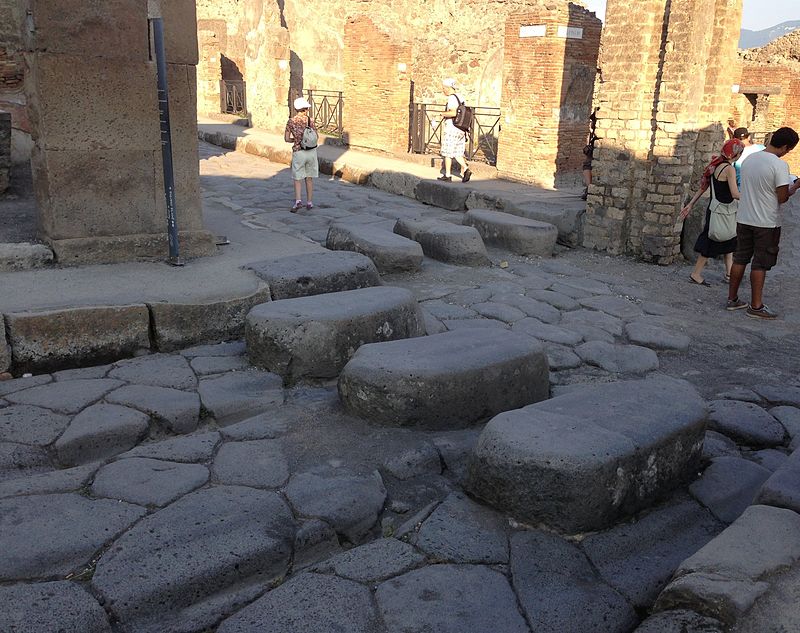
Not the whole picture
According to site like Wikipedia and other historical sites, pedestrian crossing or Zebra crossing lines are a modern invention. But are they really? Basically, NO!
Cars and new traffic laws
Wikipedia explains that the British introduced the practice in the Road Traffic Act of 1934. After the invention of the car, it became a priority to introduce order and rules to avoid chaos and accidents. The British experimented crossing lines in 1949 and eventually introduced in 1951. Later, they were adopted by all European countries and the world. But why do they have that very unique shape? The answer is simple, because modern crossings were designed after another much older pedestrian crossing used by the very pragmatic Romans.
Rome and pragmatic solutions to dirt and traffic
Rome was most likely the first city in the world to reach a population of around 1 Million. With such a large population there is traffic. Wagons, carts, horses and pedestrians all tried to navigate the eternal chaotic city. In the early years, Rome was certainly not built like modern cities. Early city traffic planning did take into consideration the amazing growth that the city had. The Romans had to adjust and adapt and their solutions are still readily visible in many ruins today, especially in Pompeii.
Problems of Roman Pedestrians

Roman roads were congested, often muddy and flooded. We can only imagine the amount of horse manure littering the streets. The streets were cleaned regularly but one horse produces about 50 pounds of manure a day! What was a Senator or a Patrician Lady going to do? The solution was simple, just cross the street on high rectangular stone bricks arranged at the same height of the sidewalk. The grooves and spaces still visible on the streets of Pompeii were necessary to allow carts (which had a standard width) to pass through these crossings. The shape and the distancing of these rectangular stones is pretty much the same of what we find today in our modern streets.
Learn more:
Roman “pedestrian crossings” « IMPERIUM ROMANUM
Streets in Pompeii – The Eruption of Mount Vesuvius (weebly.com)
Ancient Roman roads and their influence in modern road designs – Engineering Rome